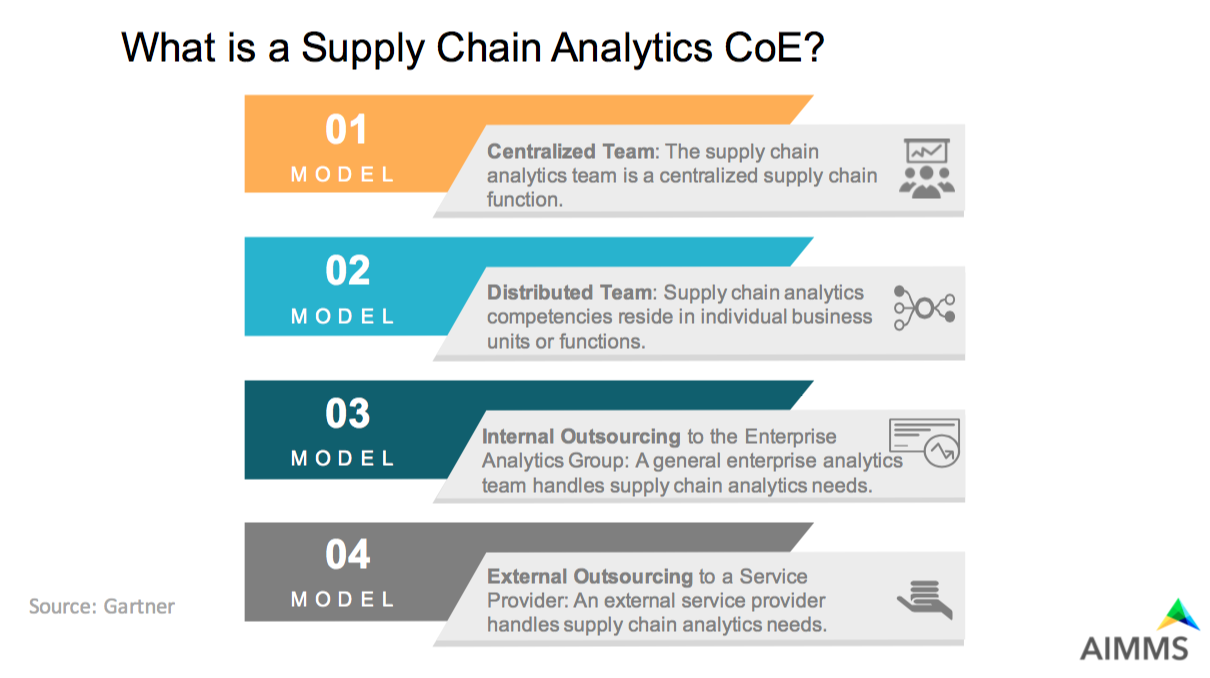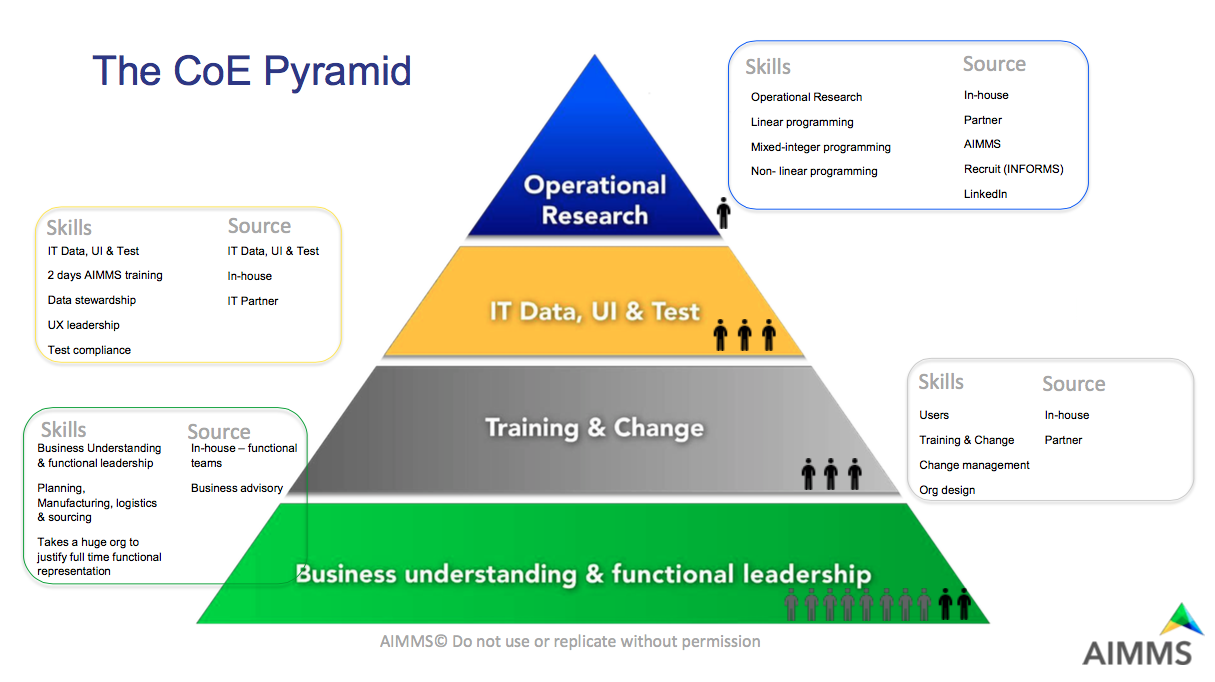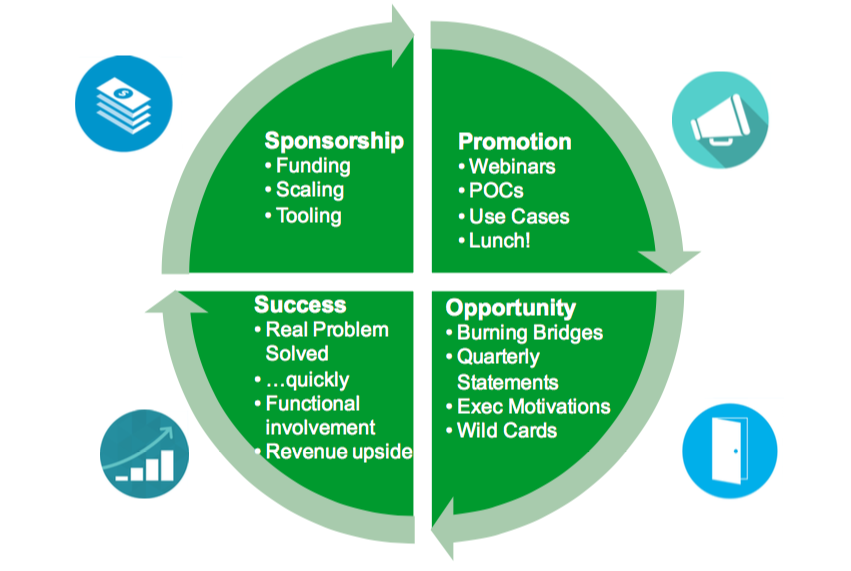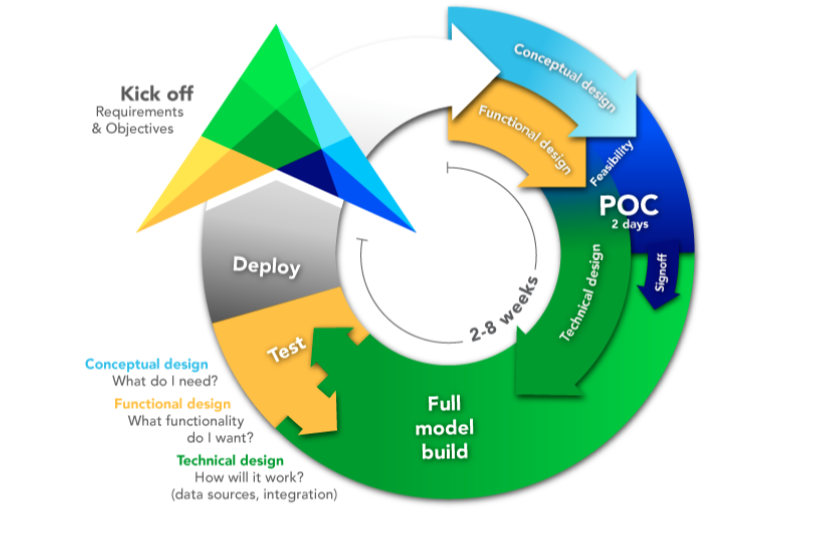A Practical Guide to Setting Up a Supply Chain Analytics Center of Excellence
It comes as no surprise that business and supply chain leaders are seeking new approaches to get ahead in the analytics age. Implementing an analytics strategy, and in particular implementing prescriptive analytics, can significantly improve revenues and drive down costs. How can you ensure that your team is prepared to embrace these new technologies and approaches? Experience shows us that technology is the easy part. Getting buy-in agreement and changing your company culture to embrace analytics is often more difficult. A Supply Chain Analytics Center of Excellence (COE) can help you start off with the right team structure, engage the right stakeholders and put you on the right path to implementation.
Our recent webinar series, “The Center of Excellence Guide – Connecting Supply Chain Capabilities and Analytics to Outpace your Peers,” covers the benefits, opportunities and best practices for creating a COE. It also offers a practical guide to Supply Chain COE methodology and technology, covering the tools and insights you need to get started. Let’s take a look at some of the basics discussed.
What is a Supply Chain COE?
A COE is an entity or initiative within an organization that provides thought leadership and support on a particular area in order to revitalize or improve the company’s performance. A COE typically involves a dedicated team. Gartner recently published research that describes four main organizational models for Supply Chain COEs:
- Centralized Teams
- Distributed Teams
- Internal Outsourcing
- External Outsourcing
Regardless of the model you choose, it’s important to have these key skill sets in your Supply Chain Analytics COE team
- Operations Research Skills
- IT Data, UI and Test Skills
- Business understanding
- Functional leadership
- Training and change management
How do you get buy-in and agreement?
So you’ve identified the skill sets you need to get started, but what about the finances? Your COE initiative will need a sponsor to succeed. To convince your executive management, you’ll want to address a pressing business problem first. Identify an important problem that needs creative approaches and new technology. Solve the problem well and quickly and start with a proof of concept to garner support.
Getting sponsorship is only half the battle, you also need buy-in from users. The easiest way to drive adoption is by actually enabling your team to test your applications quickly. Don’t expect to build the perfect app from the start. Rather, start with a simple tool that has a user friendly interface, encourage your team to experiment with it and take incremental improvements according to the insights you gain.
What should you expect from your toolset?
As we mentioned earlier, the technology should be the easy part. If your business problem is clearly defined, it should be easier to establish your technology requirements. To stimulate innovation and drive adoption quickly, make sure the toolset you use is:
- Easy to model
- Flexible & Fit for purpose
- Attractive & Easy to use
- Collaborative
- Scalable
- Easy to integrate
- Easy to deploy
Ready to start?
Interested in creating your own Supply Chain Analytics Center of Excellence? Interested in engaging in a Two-Day Proof of Concept event? Watch the full webinar series to learn more and contact us for a consultation with one of our experts!









